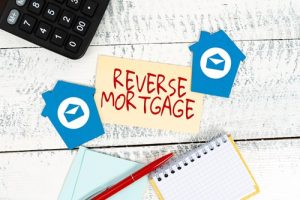
Understanding the financial side of a reverse mortgage is key to making smart decisions about your home’s equity. The LTV ratio determines how much money you can receive from a reverse mortgage. Knowing how it works helps you plan better for the future.
If you’re considering tapping into your home’s equity, learning about LTV ratios in the context of a reverse mortgage is a great starting point.
What Is a Loan-to-Value Ratio?
The LTV ratio measures the relationship between the loan amount and the appraised value of your home. Put simply, in a reverse mortgage, the LTV ratio shows the percentage of your home’s value that you can borrow.
Because a higher LTV ratio means less leftover equity, understanding this number is crucial before moving forward. Although every case is unique, the basics of calculating an LTV ratio remain fairly consistent across different loan types.
How to Estimate Your Reverse Mortgage Loan-to-Value Ratio
While official numbers come from lenders, you can estimate your LTV ratio with a simple formula. First, divide the expected loan amount by your home’s appraised value. Then, you should multiply it by 100 to get a percentage.
For example, if your home appraises at $400,000 and you qualify for a $250,000 reverse mortgage. So, the calculation looks like this:
Loan Amount ÷ Appraised Value = LTV Ratio
$250,000 ÷ $400,000 = 0.625
0.625 × 100 = 62.5%
Thus, your LTV ratio would be 62.5%, meaning you could borrow up to 62.5% of your home’s appraised value. Because estimating early helps manage expectations, it’s always wise to have a rough idea before speaking with a lender.
Factors That Influence Reverse Mortgage Loan-to-Value Ratios
 Reverse mortgage in Charleston SC
Reverse mortgage in Charleston SCSeveral factors can impact the amount of money you can access through a reverse mortgage. While you can’t control all of them, understanding these elements prepares you for better financial decisions.
Age of the Borrower: The older you are, the higher your LTV ratio tends to be. Since lenders assume older borrowers will hold the loan for a shorter period, they allow a higher percentage of the home’s value.
Interest Rates: Lower interest rates usually allow higher LTV ratios. When loan balances grow more slowly, lenders can offer more upfront without increasing risk.
Home Value: Naturally, the more your home is worth, the more you can borrow. A higher appraisal translates into a higher LTV ratio, which benefits borrowers.
Type of Reverse Mortgage Loan: Home Equity Conversion Mortgages (HECMs), insured by the government, often allow higher LTV ratios compared to private or proprietary reverse loans.
Current Loan Balances: If you have a small or fully paid-off existing mortgage, you’ll usually qualify for a higher LTV ratio since there’s less debt to settle first.
Because all these factors interact differently, it’s essential to review your specific situation carefully with a lender.
Why a High Loan-to-Value Ratio Matters
Although you might not control your exact LTV ratio, it’s important to understand how it impacts your financial flexibility with a reverse mortgage in Charleston SC. Here are some key ways a higher LTV ratio plays into your loan:
Greater Access to Equity: A higher LTV ratio means more cash available for renovations, healthcare costs, travel, or simply enhancing your quality of life. Consequently, many borrowers use these funds to achieve long-awaited goals.
Limited Future Equity: Drawing a large amount upfront could leave little equity for future needs, refinancing, or leaving an inheritance. Because life circumstances can change, it’s wise to plan carefully.
Increased Interest Payments: Since you’re borrowing more, interest charges over the life of the loan can add up faster, slightly reducing your remaining equity. Yet, understanding this tradeoff allows you to balance short-term needs with long-term financial planning.
Higher Monthly Payments: Some borrowers prefer monthly disbursements. A high LTV ratio often results in larger payments, which can significantly help those living on fixed retirement incomes by providing extra breathing room.
Making Smart Decisions
Choosing a reverse mortgage is a big decision, so understanding how the loan-to-value ratio fits into the bigger picture is vital. Whether you’re seeking a lump sum, steady monthly payments, or a flexible line of credit, knowing your potential LTV ratio helps you plan your financial future with more confidence.
Additionally, working closely with a knowledgeable professional like South Carolina Reverse Mortgage Services ensures you maximise the benefits while staying informed about how much of your home’s value you’re tapping into. Although navigating these choices might feel complex at first, gaining clarity early empowers you to make decisions that fit your life today and tomorrow.
If you’re ready to explore your options and see how much you could qualify for, call South Carolina Reverse Mortgage Services now to speak with a reverse mortgage expert and discover the possibilities waiting for you!


 Reverse mortgage in Columbia SC
Reverse mortgage in Columbia SC
 Reverse mortgage in Charleston SC
Reverse mortgage in Charleston SC

 Reverse mortgage in Charleston SC
Reverse mortgage in Charleston SC